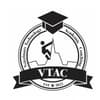Podcast
Questions and Answers
Match the following stages of nutrition with their correct descriptions:
Match the following stages of nutrition with their correct descriptions:
Ingestion = The taking in of food, usually as solids, into the alimentary canal through the mouth Digestion = The process of breaking food into pieces that are small enough to pass through the wall of the intestine Absorption = The process of taking molecules of broken-down food from the alimentary canal into the blood or lymphatic systems, which then transport them to where they will be used or stored
Match the following types of heterotrophs with their correct definitions:
Match the following types of heterotrophs with their correct definitions:
Herbivores = Eat mainly plants and are often called primary consumers Carnivores = Eat mainly meat and are often called secondary consumers Omnivores = Eat both plants and animals
Match the following types of digestion with their correct descriptions:
Match the following types of digestion with their correct descriptions:
Mechanical Digestion = Using teeth to cut and grind the food in order to increase the surface area Chemical Digestion = Enzymes are used to speed up chemical reactions. The chemical reactions break large, complex molecules into smaller, simpler ones that are small enough to pass through the intestine wall
Match the following parts of the digestive system with their correct functions:
Match the following parts of the digestive system with their correct functions:
Match the following terms with their correct definitions:
Match the following terms with their correct definitions:
Match the following types of organisms with their correct feeding habits:
Match the following types of organisms with their correct feeding habits:
Match the following parts of the digestive system with their functions:
Match the following parts of the digestive system with their functions:
Match the following dental terms with their descriptions:
Match the following dental terms with their descriptions:
Match the following parts of the stomach with their functions:
Match the following parts of the stomach with their functions:
Match the following parts of the small intestine with their functions:
Match the following parts of the small intestine with their functions:
Match the following substances with their functions in the digestive system:
Match the following substances with their functions in the digestive system:
Match the following parts of the digestive system with their descriptions:
Match the following parts of the digestive system with their descriptions:
Match the following digestive enzymes with their correct descriptions:
Match the following digestive enzymes with their correct descriptions:
Match the following digestive enzymes with their optimal pH levels:
Match the following digestive enzymes with their optimal pH levels:
Match the following parts of the digestive system with their functions:
Match the following parts of the digestive system with their functions:
Match the following substances with the site of their absorption in the digestive system:
Match the following substances with the site of their absorption in the digestive system:
Match the following adaptations of the ileum for absorption with their descriptions:
Match the following adaptations of the ileum for absorption with their descriptions:
Match the following roles of symbiotic bacteria in the intestine with their descriptions:
Match the following roles of symbiotic bacteria in the intestine with their descriptions:
Match the following components of a balanced human diet with their descriptions:
Match the following components of a balanced human diet with their descriptions:
Match the following functions of the liver with their descriptions:
Match the following functions of the liver with their descriptions:
Flashcards are hidden until you start studying





